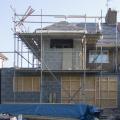The Most Important Factors to Consider When Installing Insulation
Installing insulation is one of the most effective ways to improve your home’s energy efficiency, comfort, and long-term value. Whether you’re building a new home, renovating an older one, or simply looking to reduce energy costs, choosing the right insulation—and installing it properly—makes all the difference. But not all insulation jobs are the same. There are several key factors you should consider before starting your project.
Here are the most important things to keep in mind when planning an insulation installation.
1. Climate and Location
Where you live plays a major role in determining the type and amount of insulation your home needs. A house in a cold northern state like Minnesota will need much higher thermal resistance than one in Florida. That’s why the U.S. Department of Energy has divided the country into climate zones, each with its own recommended insulation values.
In hotter regions, insulation should focus on keeping cool air inside and blocking heat gain. In colder regions, the priority is retaining indoor heat. For homes in mixed climates—like many areas in the Southeast or Midwest—a balanced approach is key.
Always refer to your local building code or the Department of Energy’s zone map to determine the right insulation levels for your location.
2. R-Value
R-value measures an insulation material’s ability to resist heat flow. The higher the R-value, the better the insulation performs. Choosing insulation with the right R-value for each part of your home—attic, walls, floors, and crawl spaces—is essential for getting the best energy savings and comfort.
Keep in mind that R-value can vary by material and thickness. For example:
- Fiberglass batts typically offer R-3.0 to R-3.7 per inch.
- Cellulose offers around R-3.2 to R-3.8 per inch.
- Closed-cell spray foam provides up to R-6.5 per inch.
More is not always better if it’s installed incorrectly or in the wrong location. Make sure you’re matching R-values to your home’s needs based on climate and construction style.
3. Type of Insulation Material
There are several insulation materials to choose from, each with pros and cons depending on where they’re used:
- Fiberglass batts are easy to install and affordable, but they require careful placement to avoid gaps.
- Blown-in cellulose is good for irregular spaces and adds soundproofing value.
- Spray foam provides high R-value and air sealing in one step but is more expensive and should be professionally installed.
- Rigid foam boards are great for walls and basement insulation where moisture resistance is important.
Some homeowners prioritize eco-friendliness or recycled content, while others may look for materials that offer additional benefits like fire resistance or sound reduction.
4. Air Sealing
Even the best insulation won’t work well if air is leaking in or out of your home. Before installing insulation, especially in attics and crawl spaces, it’s important to seal all gaps, cracks, and penetrations.
Common leak points include:
- Around windows and doors
- Attic hatches
- Electrical outlets and wiring holes
- Plumbing penetrations
Air sealing helps prevent drafts, reduces moisture problems, and makes insulation much more effective. Many energy audits include blower door tests to identify air leaks before an insulation project begins.
5. Moisture Control
Insulation can trap moisture if the area isn’t properly ventilated or sealed. That can lead to mold, mildew, wood rot, and reduced insulation performance.
Certain materials, like closed-cell spray foam or rigid foam board, are more resistant to moisture. In damp areas like basements or crawl spaces, vapor barriers may be needed to prevent moisture buildup. In attics, proper ventilation is essential to avoid condensation issues.
Before installing insulation, ensure the space is dry and well-ventilated—or consider materials that resist moisture in problem areas.
6. Installation Quality
Even the best insulation material can perform poorly if it’s installed incorrectly. Gaps, compression, or poor coverage can drastically reduce insulation effectiveness.
For example:
- Gaps between batts can lower R-value by up to 25%.
- Compressed batts won’t perform as rated.
- Uneven coverage of blown-in insulation creates cold spots.
Working with trained professionals ensures the insulation is applied correctly and safely. This is especially important for materials like spray foam, which require precise mixing and handling.
7. Budget and ROI
Insulation is an investment that typically pays off in reduced energy bills and increased comfort. Still, your budget may determine which materials and methods are realistic.
Fiberglass and cellulose are generally more affordable upfront, while spray foam and rigid foam board come with higher costs but deliver long-term performance and durability.
Make sure to consider potential energy rebates, tax credits, and the return on investment when comparing your options. A slightly higher upfront cost may lead to much greater savings over time.
Final Thoughts
When it comes to insulation, there’s no one-size-fits-all solution. Choosing the right material, R-value, and installation approach depends on several factors—from climate and budget to your home’s construction and energy needs.
Properly installed insulation helps you control indoor temperature, cut down on energy bills, reduce noise, and protect your home from moisture and air leaks.
Whether you’re upgrading an older home or planning a new build, taking the time to evaluate these key factors will lead to a smarter, more effective insulation project.
More to Read:
Previous Posts:


